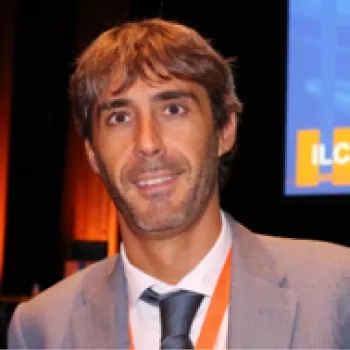The Impact of Artificial Intelligence on Diagnosing Prostate Cancer: Review of the Literature and Preliminary Experience
During the last 10 years, we observed a progressive decrease of pathologists while the number of information released in a pathological report increased dramatically. The gap generated by these opposite trends is likely to be filled by Pathology 2.0 or e-Pathology. This latter rests on the transition from glass to digital slide (WSI) which in turn allow the use of specific software, mostly based on Artificial intelligence algorithm, fastening and improving the routine activity.
During this lecture, Prof. Luca Di Tommaso will focus on one of the settings where e-Pathology is ready to be introduced in the clinical practice: the screening and diagnosis of prostatic cancer in biopsy specimen.
About the presenter

The main field of Luca’s research is Liver Pathology where he contributed to the identification of biomarkers characterizing malignant transformation of hepatocellular nodules. Some of these are now part of the 5th edition of WHO guidelines for the diagnosis of hepatocellular carcinoma.
Other fields of interest are Breast, Thymic and Thyroid pathology. In each of these fields, Luca contributed to identify novel entities. Accordingly, he is one of the authors of the 5th edition of WHO Classification of Thymic Tumors.
Luca has a strong commitment for History of Medicine: this latter and Pathology, are his teaching topics at Humanitas University.
Recently, he developed a strong interest in the field of digital-, computational- and augmented- pathology. These settings likely represent the future of our discipline, under the definition of e-Pathology.
El contenido de Leica Biosystems Knowledge Pathway está sujeto a las condiciones de uso del sitio web de Leica Biosystems, disponibles en: Aviso legal.. El contenido, incluidos los webinars o seminarios web, los recursos de formación y los materiales relacionados, está destinado a proporcionar información general sobre temas concretos de interés para los profesionales de la salud y no está destinado a ser, ni debe interpretarse como asesoramiento médico, normativo o jurídico. Los puntos de vista y opiniones expresados en cualquier contenido de terceros reflejan los puntos de vista y opiniones personales de los ponentes/autores y no representan ni reflejan necesariamente los puntos de vista ni opiniones de Leica Biosystems, sus empleados o sus agentes. Cualquier enlace incluido en el contenido que proporcione acceso a recursos o contenido de terceros se proporciona únicamente por comodidad.
Para el uso de cualquier producto, debe consultarse la documentación correspondiente del producto, incluidas las guías de información, los prospectos y los manuales de funcionamiento.
Copyright © 2025 Leica Biosystems division of Leica Microsystems, Inc. and its Leica Biosystems affiliates. All rights reserved. LEICA and the Leica Logo are registered trademarks of Leica Microsystems IR GmbH.